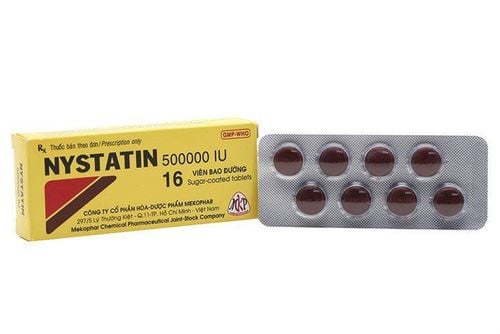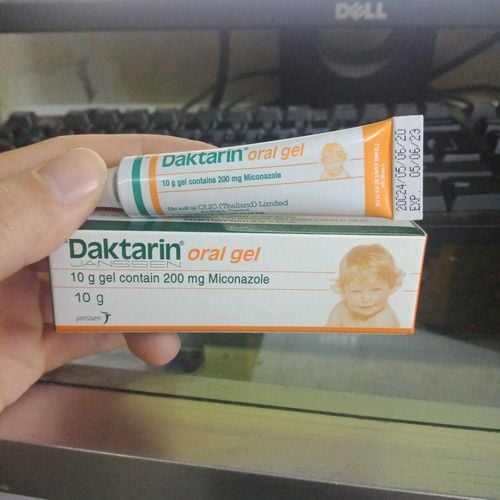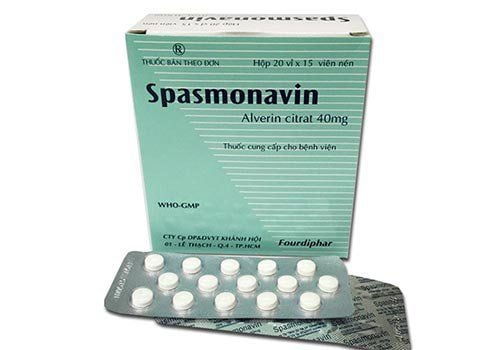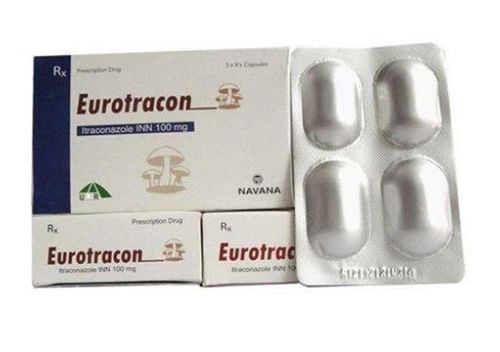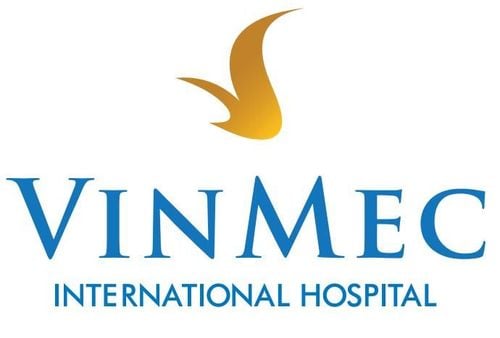This is an automatically translated article.
Itramir is a class of antibiotics, anti-infectives, commonly used in the treatment of viral and fungal infections. With the main active ingredient is Itraconazole, the following article will provide full information about Itramir including how to use it and notes when using it.1. What is Itramir?
Itramir belongs to the group of antiparasitic drugs used in the treatment of fungi. Itramir has the active ingredient Itraconazole in the form of Pellet 22%. Itramir is made in capsule form with the content of Itraconazole in each tablet is 100mg.
2. Uses of the drug Itramir
About the use of Itramir drug, Itraconazole itself is a synthetic triazol substance with antifungal effect. Clinically, the antifungal activity of Itraconazole has been shown to be superior to that of Ketoconazole in the presence of certain fungi such as Aspergillus spp.
The antifungal effect of Itramir comes from its ability to inhibit the Cytochroom P450-dependent enzyme of the fungus, thereby inhibiting ergosterol biosynthesis leading to dysfunction of enzyme membranes, membrane binding of fungal cells, making fungal cell survival less stable.
Itramir's antifungal spectrum can be mentioned as: Coccidioides, Candida, Cryptococcus, Histoplasma, Blastomyces, Sporotrichosis spp.
3. Pharmacokinetics of the drug Itramir
The drug Itramir with the active ingredient Itraconazole is well absorbed when administered from the gastrointestinal tract. The time of administration may be after a meal or during a meal, because food increases the absorption of the drug in the body. With the dosage form of capsules, the bioavailability of Itramir is calculated to be 70% when administered orally. The solubility of the antifungal drug Itramir will increase in acidic medium and the peak concentration after oral administration of 100mg after 4-5 hours is 20 micrograms/liter.
In the body environment, 99% of the drug Itramir will be bound to plasma proteins, specifically albumin, less than 1% of the drug will be in the free form. In terms of metabolism, Itramir is well and mainly metabolized in the liver into many substances and then excreted in bile or urine. The metabolite of Itraconazole with antifungal activity is hydroxyitraconazole.
Excretion of the drug Itramir is mainly in the urine with a concentration of 40%, in the feces is 18% and a small amount is excreted through the horny layer and hair of the patient. The elimination half-life after an oral dose of 100 mg is 20 hours, the elimination half-life may be longer if the patient takes high doses during the day.
4. Indications for taking Itramir
With the main use of antifungal, Itramir is indicated in the treatment of fungal diseases as follows
Candida in the mouth - throat. People with tinnitus. Fungus in the skin of the feet, inguinal skin, interstitial fungus. Toenail fungus, toenail fungus. Cases of visceral fungus caused by Aspergillus, Candida. Patients infected with fungi Histoplasma, Sporothrix, Paracoccidioides, Cryptococcus, Blastomyces. Maintenance treatment and prophylaxis of recurrent fungal infections in AIDS patients. Prophylactic treatment of fungal infections during neutropenia.
5. Contraindications to the use of Itramir
As an antifungal drug, with a mechanism of action and action similar to antibiotics, Itramir is also contraindicated in some of the following cases:
Hypersensitivity to any component of Itramir. Itramir is contraindicated during pregnancy or lactation, except in life-threatening visceral fungal infections. Contraindicated to use Itramir while being treated with drugs: Astermizol, cisapride, terfenadine, triazolam, midazolam.
6. Dosage & how to use Itramir
How to use: Itramir is made in the form of capsules, so it is indicated for oral use. The appropriate time to take Itramir is after meals or with meals to increase drug absorption.
Specific dosage in fungal infections of the skin and mucous membranes
Vulvar - vaginal candidiasis: 100mg x 2 times/day, dose for 1 day; or 200mg x 1 time / day and used for 3 consecutive days. People with tinea versicolor: 200mg x 1 time/day, dose for 7 days. Ringworm: 200mg x 1 time/day, dose for 7 days or 100mg x 1 time/day for 15 days. Dosage in cases of high keratinization such as fungal infections of the soles and palms: 200mg x 2 times/day, dose for 7 days or 100mg x 1 time/day, dose for 30 days. Oral candidiasis: 100mgx 1 time/day, dose for 15 days. In people with AIDS, prophylaxis against fungal infections while neutropenic: 200mg x 1 time/day, dose for 15 days. People with nail or toenail fungus: The dose is divided into 2-3 sessions, each session will include 7 days, 400mg daily, divided into 2 times including 200mg morning, 200mg afternoon. Consecutive courses of treatment must be separated by 3 weeks of drug-free treatment. If continuous treatment regimen is selected, the dose of Itramir is 200mg x 1 time/day for 3 months continuously. Dosage of Itramid in the treatment of visceral fungal infections:
Aspergillus infections: 200mg x 1 time / day, dose for 2 - 5 months, if the fungus spreads, the dose can be increased to 200mg x 2 times / day. Candida infections: 100 - 200mg x 1 time / day, used for 3 weeks to 7 months depending on the doctor's prescription. Epidural Cryptococcus infections: 200mg x 1 time/day, used for 2 months to 1 year as prescribed by the doctor. Cryptococcal meningitis: 200mg x 2 times/day. Maintenance dose: 200mg/day, taken once a day. Histoplasmosis: 200mg x 1-2 times/day, average dose for 8 months. Sporothrix schenckii infection: 100mg x 1 time/day, dose for 3 months. Infection with Paracoccidioides brasiliensis: 100mg x 1 time/day, dose for 6 months. Chromomycosis (Cladosporium, Fonsecaea): 100mg - 200mg x 1 time / day, dose for 6 months. Blastomyces dermatitidis infection: 100mg x 1 time/day or 200mg x 2 times/day, dose for 6 months.
7. Side effects of the drug Itramir
Itramir side effects cover many systems and organs of the body, including common and rare side effects.
Digestive system: Nausea, abdominal pain, digestive disorders and diarrhea. Immunity: Hypersensitivity and allergy. Hypokalemia (rare). Neurological: Peripheral neuropathy, headache, dizziness (rare). Cardiovascular: Congestive heart failure (rare). Respiratory: Pulmonary edema (very rare). Hepatobiliary: Liver toxicity, hepatitis, elevated liver enzymes (rare). Stevens-Johnson syndrome, angioedema, urticaria, photosensitivity. In women, menstrual irregularities may occur.
8. Notes when using Itramir
Do not breast-feed while taking medicines containing itraconazole. Overdosage of Itramir can cause hepatitis, so it is necessary to periodically monitor liver enzymes and consider stopping the drug if abnormal liver signs are observed. Itraconazole, when used with antidiabetic agents, can cause severe hypoglycaemia. Blood glucose levels should be closely monitored and the dose of antidiabetic drugs adjusted if necessary. Itramir is better absorbed in the acidic environment of the stomach. Therefore, if the drug is taken with antacids or H2 antagonists (cimetidine, ranitidine, omeprazol, esomeprazole) will reduce the absorption of Itramir drug. Enzyme-inducing drugs such as rifampicin, phenobarbital, isoniazid, and phenytoin will reduce the concentration of Itramir in the blood. Itramir is a drug used in the treatment of fungal diseases, with the main active ingredient being Itraconazole. Itramir is a drug that is used according to a doctor's prescription, so patients do not arbitrarily adjust the dose according to their own preferences.





